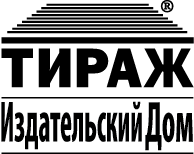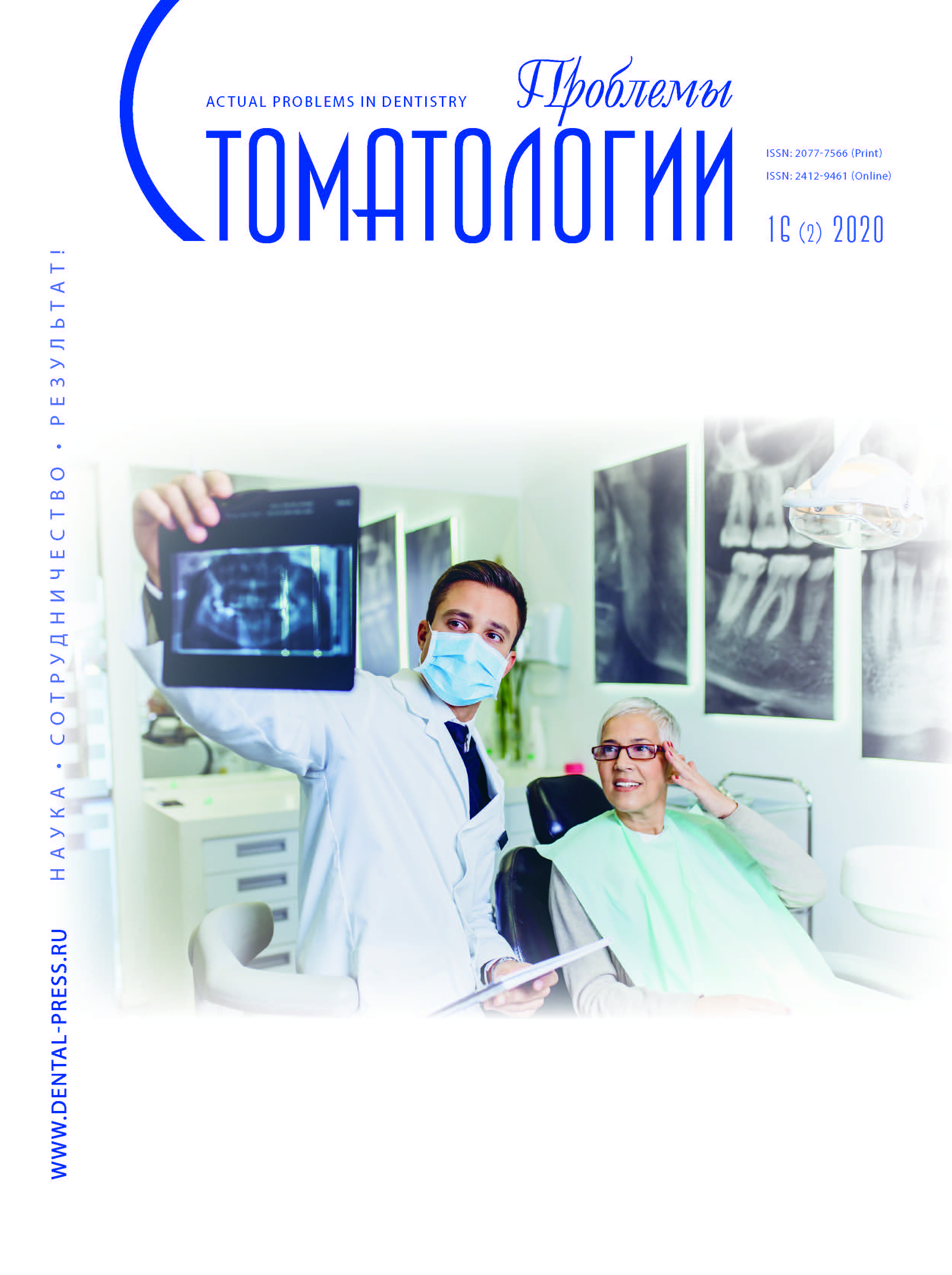Ufa, Ufa, Russian Federation
Ufa, Ufa, Russian Federation
Ufa, Ufa, Russian Federation
Subject. The dentist using electroneuromyography can determine the amplitude, nature of work and the degree of symmetry of the muscles in various conditions. Biopotentials of musculus masseter and musculus temporalis change during the exercise depending on the severity of physical activity, because they have a previously developed algorithm of muscle contraction. Aim is to analyze the degree of symmetry of the masticatory muscles depending on the chewing side preference Methodology. 26 people were examined in the investigation. They completed special questionnaire. The state of the masticatory muscles was determined by palpation, then the muscles were examined in various functional states using the electroneuromyograph. Results. When a participant have done an exercise (bench press with dumbbells), the lower jaw lost its mainstay. The optimal force of muscle closure was determined to restore the balance of the musculus masseter. Due to musculus temporalis contraction, the occlusal axis was changed more medially to the premolar and the lower jaw was pushed slightly forward. As a result, after finding a mainstay, the work of musculus masseter and musculus temporalis leveled off and became more synchronous in order to achieve the coordinated and balanced work of musculus masseter, musculus temporalis and also of the musculoskeletal system as a whole. Conclusions. Planning the treatment dentist should attend to restoration of the teeth tubercles on the chewing sides preference and non-preference, because the contraction of the musculus masseter and musculus temporalis on the right and on the left is not synchronous.
physical exertion, EMG, musculus masseter and musculus temporalis, electroneuromyography, chewing side preference
1. Abajyan, V. N. (2003). Izmeneniye pokazateley mikrotsirkulyatsii slizistoy obolochki proteznogo lozha posle protezirovaniya s"yemnymi protezami [Changes in the microcirculation of the mucous membrane of the prosthetic impression area after proshetic treatment]. Metody issledovaniya regionarnogo krovoobrashcheniya i mikrotsirkulyatsii v klinike [Methods for the study of regional blood circulation and microcirculation in the clinic], 113-114. (In Russ.)
2. Abakarov, S. I., Omarov, O. G., Sorokin, D. V. et al. (2008). Elektromiograficheskoye issledovaniye myshts chelyustno-litsevoy oblasti posle ortopedicheskogo lecheniya v dinamike [Electromyographic study of the maxillofacial muscles in dynamics after orthopedic treatment]. Materialy X Yezhegod. nauch.-praktich. konf. «Sovremennyye tekhnologii v stomatologii» [Materials X Yearly. scientific-practical conf. "Modern technology in dentistry"], 184. (In Russ.)
3. Brega, I. N., Zheleznyy, P. A., Adonyeva, A. V., Shchelkunov, K. S., Piven, E. D. (2018). Kliniko-funktsional'noye obosnovaniye etapnosti kompleksnogo lecheniya patsiyentov s vpravlyayemym smeshcheniyem sustavnogo diska visochno-nizhnechelyustnogo sustava pri patologii prikusa i gipertonuse zhevatel'noy muskulatury [Clinical and functional substantiation for complex treatment staging in patients with the temporomandibular joint disk displacement with reduction of bite pathology and the hypertonicity of the masticatory muscles]. Sibirskiy nauchnyy meditsinskiy zhurnal [Siberian Scientific Medical Journal], 38 (4), 105-113. (In Russ.)
4. Kibkalo, A. P., Sarkisov, K. A., Veysgeym, L. D., Pchelin, I. Yu. (2015). Preimushchestvennaya storona zhevaniya, privychnaya okklyuziya i klykovoye vedeniye- dopolnitel'nyye sostavlyayushchiye funktsional'noy okklyuzii [Preferential side of chewing, chronical occlusion and cuspid yuidance are additional constituents of functional occlusion]. Rossiyskiy stomatologicheskiy zhurnal [Russian medical journal], 19 (2), 12-14. (In Russ.)
5. Kibkalo, A. P., Sarkisov, K. A., Mikhalchenko, D. V., Pchelin, I. U. (2014). Vozmozhnosti izmeneniya «preimushchestvennoy» storony zhevaniya na protivopolozhnuyu i faktory, privodyashchiye k etim izmeneniyam [Change in chewing side preference: risk factors]. Volgogradskiy nauchno-meditsinskiy zhurnal [Volgograd scientific medical journal], 39-42. (In Russ.)
6. Onopa, E. N., Semenyuk, V. M., Smirnov, K. V., Smirnova, Yu. V. (2004). Elektromiograficheskaya aktivnost' zhevatel'nykh myshts pri razlichnoy funktsional'noy sposobnosti zubochelyustnoy sistemy cheloveka [Electromyographic activity of the masticatory muscles with various functional abilities of the dentition]. Institut stomatologii [Institute of Dentistry], 2, 54-55. (In Russ.)
7. Popov, S. A., Satygo, E. A. (2009). Diagnosticheskoye znacheniye standartizirovannykh elektromiograficheskikh pokazateley zhevatel'nykh myshts [Diagnostic value of standardized electromyographic parameters of masticatory muscles]. Rossiyskiy stomatologicheskiy zhurnal [Russian Dental Journal], 6, 18-20. (In Russ.)
8. Timacheva, T. B. (2010). Innovatsionnyye metody diagnostiki disfunktsii visochno-nizhnechelyustnogo sustava i narusheniya okklyuzii v neyromyshechnoy stomatologii [Innovative methods of diagnosing dysfunction of temporo mandibular joint and malocclusion in neuromuscular dentistry]. Byulleten' Volgogradskogo nauchnogo tsentra RAMN [Bulletin of the Volgograd Scientific Center RAMS], 9-13. (In Russ.)
9. Trezubov, V. N., Bulycheva, E. A. (2010). Ispol'zovaniye uslovnoreflektornoy terapii u bol'nykh s gipertoniyey zhevatel'nykh myshts [The use of conditioned reflex therapy in patients treatment with masticatory hypertension]. Stomatologiya [Dentistry], 3, 61-64. (In Russ.)
10. Fleicher, G. (2019). Indeksnaya otsenka patologii visochno-nizhnechelyustnogo sustava : rukovodstvo dlya vrachey [Index of Temporomandibular Joint Pathology : the Guide for Physicians]. (In Russ.)
11. Caloss, R., Al-Arab, M., Finn, R.A. et al. (2010). Does lond-term use of unstable dentures weaken jaw muscules. J.Oral Rehabil, 37, 4, 256-261.
12. Ceruti, P., Bryant, S. R., Lee, J. H. et al. (2010). Magnet -retained implant-supported overdentures: review and 1-year clinical report. J.Canad.Dent.Ass, 76, 52.
13. Hasegawa, S., Sekita, T., Hayakawa, Y. (2003). Effect of denture adhesire on stability of complete dentures and the masticatory function. J. Med. Dent. Sci, 50, 4, 239-247.
14. Matsuo, K., Palmer, F. B. (2009). Coordination of mastication, swallowing and breathing. J. Dent. Sci. Rev, 42, 1, 31-40.



















